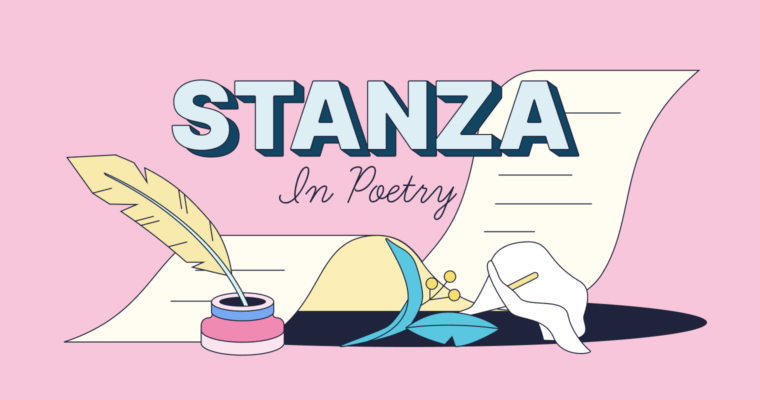
If you’re wondering how to write a novel, keep the following in mind:
- A novel has a beginning, middle, and end.
- A novel has characters, plot, setting, and conflict.
- A novel must explore at least one theme.
Before you start working on your novel, familiarize yourself with the elements that separate novels from other types of writing. A novel is more than a long story; it’s a distinct type of story that has multiple “moving parts.”
What is a novel?
A novel is a book-length story. Typically, novels are between 50,000 and 110,000 words, but this can vary by genre. Because of their length, novels often tell fairly complex stories, with in-depth exploration of characters, themes, and settings. Novels can be for adults, teens, or children and can fit into a wide variety of genres. However, not all novels fit neatly into one genre—some straddle two or more, and others don’t belong to any genre.
Novels are fictional stories, but they may be based on historical figures or events. This is what separates a novel from a book: While a book can be any bound piece of writing, a novel is a specific type of book that tells a detailed fictional story.
How to prepare to write a novel
A novel has seven literary elements:
- Idea
- Characters
- Setting
- Plot
- Narrative
- Themes
- Conflict
Every novel starts with an idea. Ideas can come from anywhere: conversations with friends, real-life experiences, writing prompts, difficult questions, thought experiments, literature you’ve read, and even the simple desire to write something entertaining.
Idea
As you generate ideas about how to begin your novel, let your mind wander. Try freewriting to see where your initial thoughts can go. Other prewriting techniques include creating an outline hitting all the elements or plot points you want to cover, diagramming or mapping characters or story arcs, or creating lists of things you want to include. You might determine which kinds of characters will appear in your novel, the setting that suits them best, and the type of conflict they’ll encounter. Don’t worry about getting everything “just right” at this stage; just explore your idea.
Characters
Characters are the people (or animals, monsters, inanimate objects, etc.) who take action in a novel. Most novels have a protagonist, also known as the main character. This is the character who experiences some type of personal change through the novel’s conflict. Opposing your novel’s protagonist is its antagonist, which could be another person, the protagonist’s environment, or even an aspect of the protagonist themselves. The friction between the protagonist and antagonist is the novel’s conflict.
Most novels include more than one character. Non-protagonist characters are collectively referred to as supporting characters, and they play a variety of roles in the novel.
Setting
A novel’s setting is where and when it takes place. Here are a few examples of novel settings:
- Tokyo, 1973
- Mars, 2144
- Middle Earth, T.A. 3018
Novel settings can be real or fictional places. They can also be set in the past, the present day, or the future.
Plot and narrative
Two critical parts of the novel-writing format are plot and narrative, which, despite intertwining, aren’t the same thing. A novel’s plot is its literal sequence of events, for example:
- Archaeologists discover a previously unknown civilization.
- As they uncover it, they realize this civilization is still thriving.
- The archaeologists meet the civilization’s mysterious leader.
- When they spend time with the leader, they learn ancient secrets about the civilization’s link to extraterrestrial life.
- Instead of publishing about the civilization and ancient knowledge, the archaeologists choose to become part of the civilization and protect its secrets.
This bare-bones plot outline gives a general sense of the novel’s story, but it reveals nothing about how the novel tells the story. Is it narrated by one of the archaeologists? Is it told through a series of journal entries? Is it told as a linear sequence, or are there flashbacks interspersed with the characters’ present day? These details are part of the novel’s narrative, which refers to the novel’s storytelling.
Theme
Last, a novel has at least one theme. A novel’s theme is the broad question it attempts to answer or the concept it aims to comment on. Using our example above, the novel’s themes might include academic publishing pressure, isolation versus acculturation, the ownership of knowledge, and humanity’s place in the cosmic landscape. It’s possible to explore all of these themes through completely different plots, which is a crucial characteristic of themes in fiction. Themes are rarely stated explicitly; they’re generally made clear through the characters’ experiences and development over the course of the novel.
How to write a novel in 7 steps
Once you’ve worked out how to begin to write a novel by familiarizing yourself with the seven components that compose every novel, it’s time to get to work. The process for how to write a novel is quite similar to the writing process for other kinds of work: It starts with developing material and, through multiple drafts and revisions, ends with a ready-to-publish piece.
1 Generate ideas
You likely brainstormed to determine who and what your novel will be about. If you feel like you have a well-developed idea for your novel, there’s no need to do this a second time. But if you feel like you still ought to fill gaps in the plotline or raise the stakes in the conflict, take time to work them out before you write an outline.
2 Create an outline
The next step in writing a novel is writing an outline. An outline can help you visualize the novel-writing format and avoid feeling overwhelmed as you write. Just like an essay outline, a novel outline is a bare-bones framework that simply lists your novel’s key plot points and a few details under each heading. Unlike an essay outline, though, a novel outline is purely for your own aid. You don’t need to stick to any particular format or include any specific amount of detail; nobody is going to check or grade your outline.
3 Write a first draft
Using your outline as a roadmap, start writing your first draft. Warning: It’s going to be messy! Don’t worry about having perfect grammar or consistent pacing or a narrative with zero plot holes: Just write. You’ll revise your work later; right now, your goal is to get the story out of your head and onto the page.
The next four steps are important parts of the novel-writing process, but they don’t necessarily need to be done in the order we’ve listed them. It’s generally in your best interest to seek critical feedback on your writing before you attempt to publish it, but you might not feel ready to share your raw first draft. That’s perfectly fine—lots of authors revise their work before sharing it with critical readers.
4 Seek feedback
Whether you share your first draft or a revised draft, it’s important to have other people read your work and give you feedback on it. It can be helpful to share your work with other writers, but if you don’t know any other writers, sharing it with non-writer family and friends is OK too. When other people read your work, they’re reading it from a different perspective and can catch plot holes, inconsistencies, and other issues you might miss because of the amount of time you’ve spent with the novel.
It can be helpful to ask for specific types of feedback, like a constructive critique of your characters’ dialogue, how the story flows, or whether the literary devices you used are enhancing the story or just distracting the reader. Receiving constructive criticism isn’t always easy, but it’s important to remember that criticism of your writing isn’t criticism of you. Reader feedback is meant to help you improve your work, so consider all the points your readers make.
5 Revise
With direction from readers and your own perspective on your novel, revise your draft. This could mean cutting entire scenes, characters, plot points, or even concepts. Be ruthless, and don’t be afraid to “kill your darlings”—an expression used by writers that means there are times when you have to get rid of a plot point, a character, or another piece of your narrative (no matter how much you may like them) to benefit the story overall.
As you revise, focus on the big-picture components of your novel that need to change. Fix grammar mistakes as you catch them, but don’t dwell on these just yet. At this stage, the goal is to refine your first draft into a tighter, more polished version of itself.
6 Write a second draft
As you revise your work, your first draft will evolve into your second draft. This is a step closer to the final version, but keep in mind that you’ll likely revise your second draft as well. Writing a novel is a long process for most authors. It takes about six months to write a first draft, then just as long to revise it and write a second draft. The final version of your novel might end up being your third, fourth, or even later draft. Don’t rush the process, and if you’re starting to think you’re not yet up to writing a full novel, consider setting it aside and writing something shorter, like a novella or a short story.
7 Edit your novel
Once you’ve got a solid second (or subsequent) draft, you still need to make edits before it’s ready to publish. Editing isn’t quite the same thing as revising; while a revision involves changing the novel’s content, editing is more of a low-level process of polishing the wording, fixing any grammatical mistakes, and the like. Give your finalized piece another pass, and if you feel it’s ready to present to the world, pat yourself on the back for finishing your novel.
From here, some authors pursue traditional publishing. Others opt to self-publish. Both have their benefits and drawbacks, and it can be helpful to discuss them with experienced, published authors to determine which path is best for your novel.
How to write a novel FAQs
What is a novel?
A novel is a book-length fictional story. Novels are generally between 50,000 and 110,000 words long.
What do you need to begin writing a novel?
A novel has seven components:
- Idea
- Characters
- Setting
- Plot
- Narrative
- Themes
- Conflict
Before you begin writing a novel, work up these seven components. With each part somewhat developed (no need to get them perfect at this point—you’ll develop them further later), you can start writing a novel.
What are the key steps for writing a novel?
- Generate ideas
- Outline
- First draft
- Feedback
- Revision
- Second draft
- Edit






